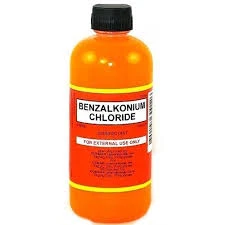anionic polyacrylamide
Anionic Polyacrylamide Properties, Applications, and Environmental Considerations
Anionic polyacrylamide (APAM) is a water-soluble polymer widely used in various industrial applications due to its unique properties. As a derivative of polyacrylamide, which is produced by the polymerization of acrylamide monomers, anionic polyacrylamide contains negatively charged functional groups that enhance its effectiveness in certain applications. This article explores the properties, applications, and environmental considerations associated with anionic polyacrylamide.
Properties of Anionic Polyacrylamide
Anionic polyacrylamide possesses several distinctive properties that make it suitable for a range of uses. Its high molecular weight allows it to form a viscous solution in water, making it an excellent thickening agent. The presence of negative charges on the polymer chains provides an affinity for positively charged particles, enhancing its role as a flocculant in water treatment processes. Additionally, the ability to modify its molecular structure enables the synthesis of different grades of APAM, each tailored for specific applications.
One of the key characteristics of anionic polyacrylamide is its solubility in water, which facilitates easy handling and application. It is typically available in granular or powder form, which can be easily dissolved in water to form a gel-like solution. The concentration of anionic charges can be adjusted during the manufacturing process, allowing for customization based on the requirements of various industries.
Applications of Anionic Polyacrylamide
The applications of anionic polyacrylamide are extensive and span multiple industries. One of the primary uses of APAM is in the field of water treatment. It plays a crucial role in coagulation and flocculation processes, where it helps aggregate suspended particles in water, allowing for their removal through sedimentation or filtration. This makes it an essential component in municipal water treatment plants, industrial effluent treatment, and wastewater management systems.
anionic polyacrylamide

In the oil and gas industry, anionic polyacrylamide is utilized as a viscosifier and fluid loss agent in drilling fluids
. Its ability to maintain viscosity at high temperatures and salinity levels helps improve the efficiency of the drilling process. Moreover, it aids in enhanced oil recovery (EOR) techniques by improving the mobility of crude oil within reservoirs.Another significant application of anionic polyacrylamide is in agriculture, where it is used as a soil conditioner. By increasing water retention in soil, APAM helps improve crop yields, especially in arid regions. Its biodegradable nature makes it a preferred choice for sustainable farming practices.
Additionally, anionic polyacrylamide finds utility in the textile and paper industries as a sizing agent and dye fixative, helping improve the quality of the final products. Its use in cosmetics and personal care products is also becoming more common, often serving as a thickening agent and stabilizer.
Environmental Considerations
While anionic polyacrylamide has proven benefits in various applications, it is essential to consider its environmental impact. The primary concern associated with APAM is its potential toxicity, particularly in its monomer form, acrylamide, which is considered a neurotoxin. However, when used in controlled amounts and proper formulations, the risks associated with APAM are significantly minimized.
Moreover, as the industry shifts toward sustainable practices, the biodegradability of anionic polyacrylamide has become an important consideration. Some formulations are designed to degrade more rapidly in the environment, reducing their long-term impact. Ongoing research aims to develop eco-friendly alternatives and assess the lifecycle impact of APAM on natural ecosystems.
In conclusion, anionic polyacrylamide is a versatile polymer with a wide range of applications across various sectors, including water treatment, agriculture, and oil recovery. Its unique properties, particularly its solubility and interaction with charged particles, make it a valuable tool in enhancing industrial processes. As we continue to explore its capabilities, it remains crucial to monitor and address environmental concerns, ensuring that its benefits are harnessed responsibly. Through innovation and sustainable practices, anionic polyacrylamide can continue to play a significant role in advancing industrial applications while promoting environmental stewardship.
-
Water Treatment with Flocculant Water TreatmentNewsJun.12,2025
-
Polymaleic AnhydrideNewsJun.12,2025
-
Polyaspartic AcidNewsJun.12,2025
-
Enhance Industrial Processes with IsothiazolinonesNewsJun.12,2025
-
Enhance Industrial Processes with PBTCA SolutionsNewsJun.12,2025
-
Dodecyldimethylbenzylammonium Chloride SolutionsNewsJun.12,2025





